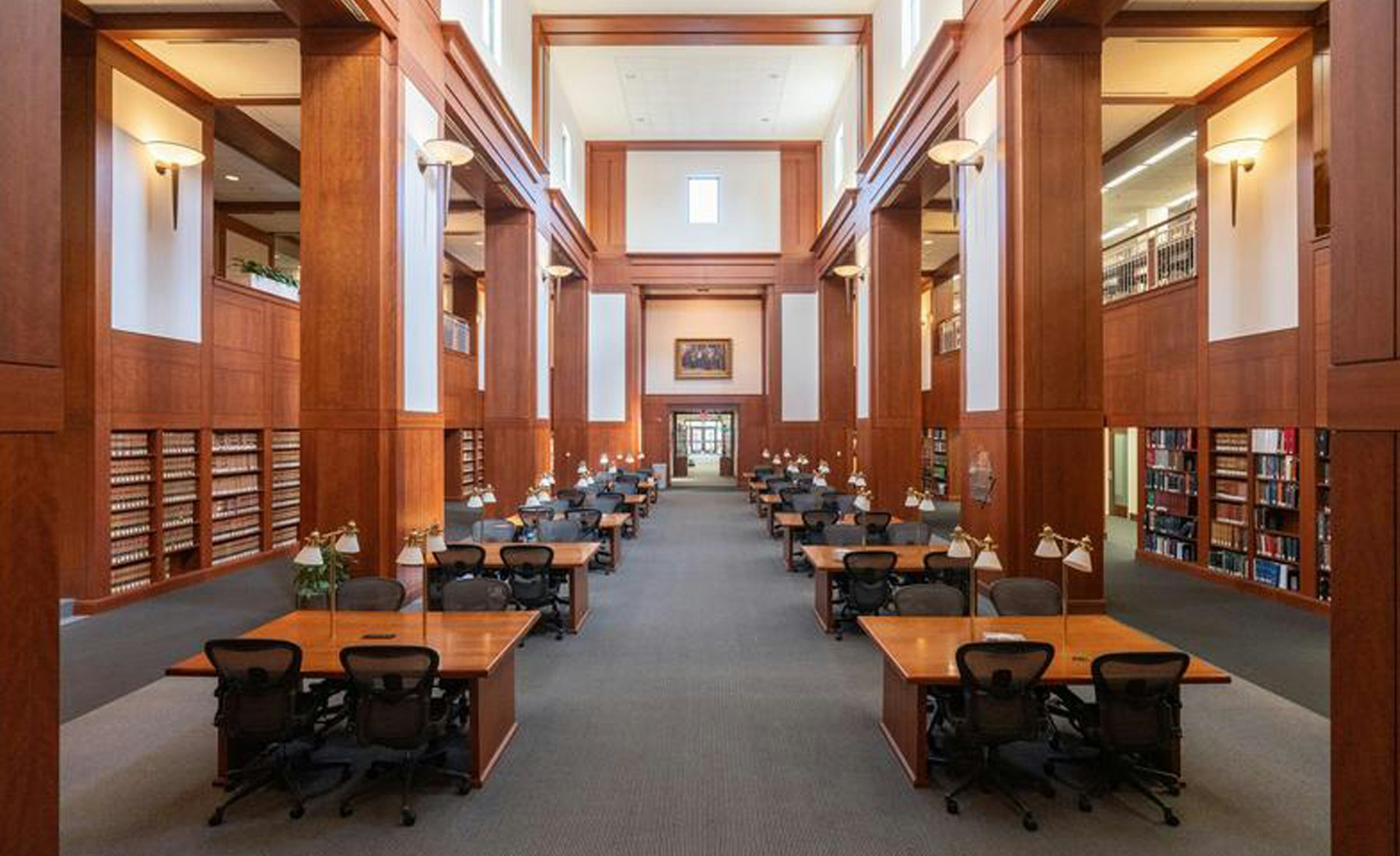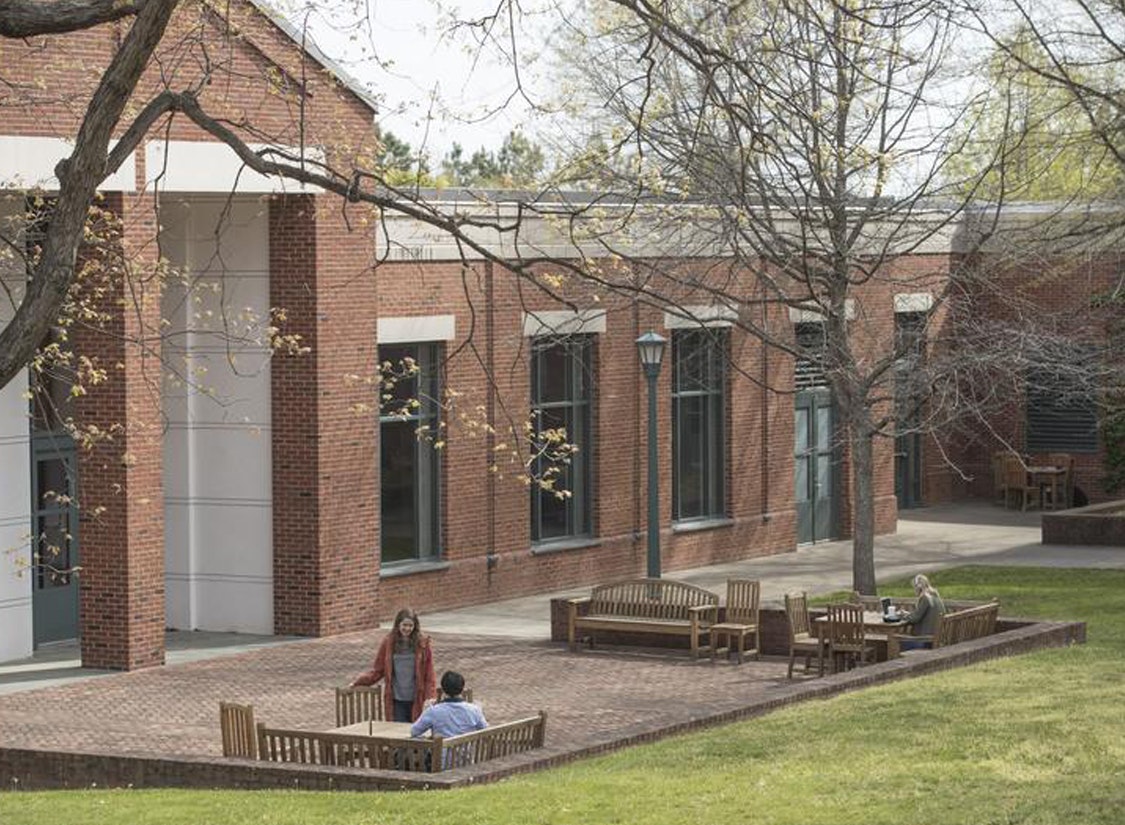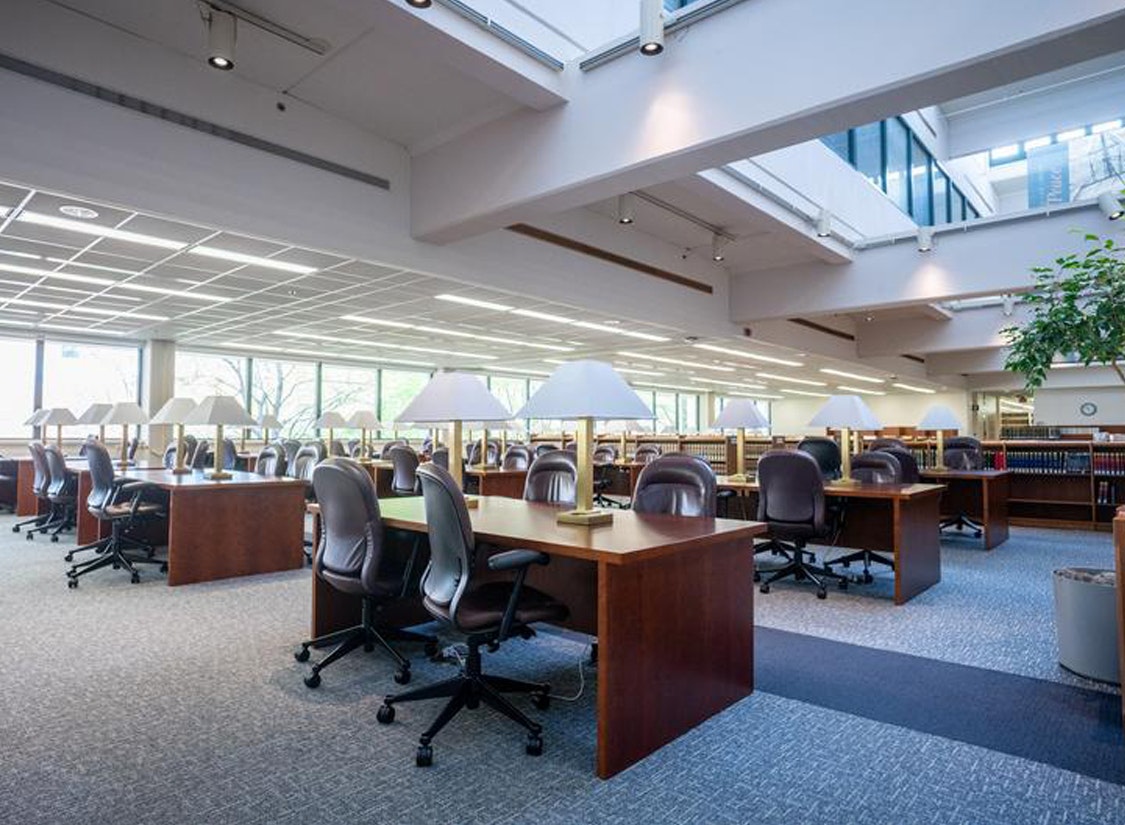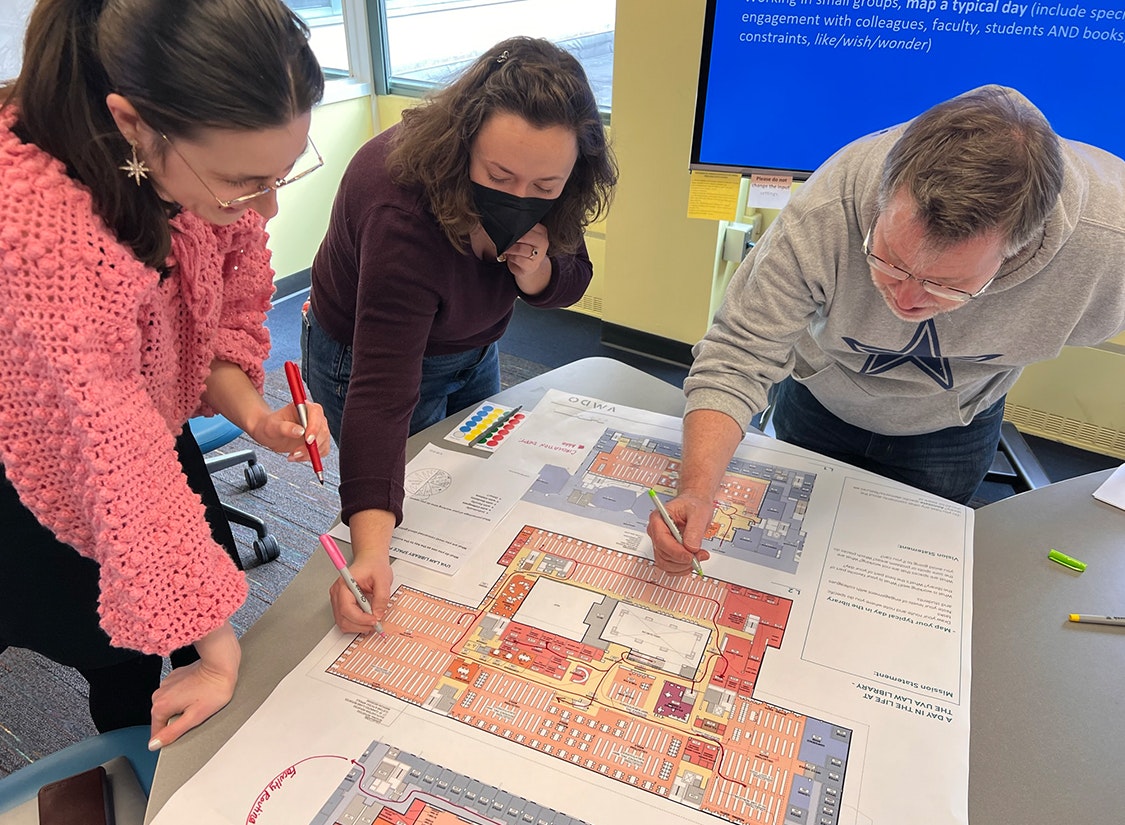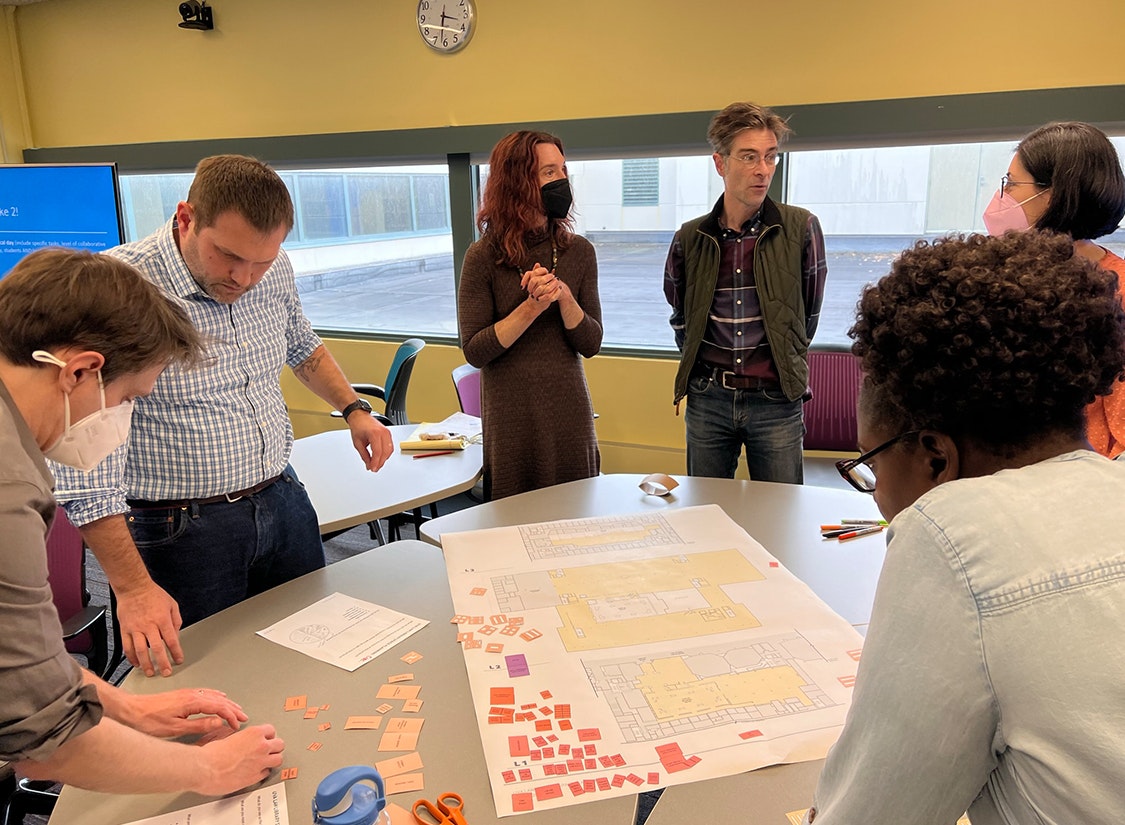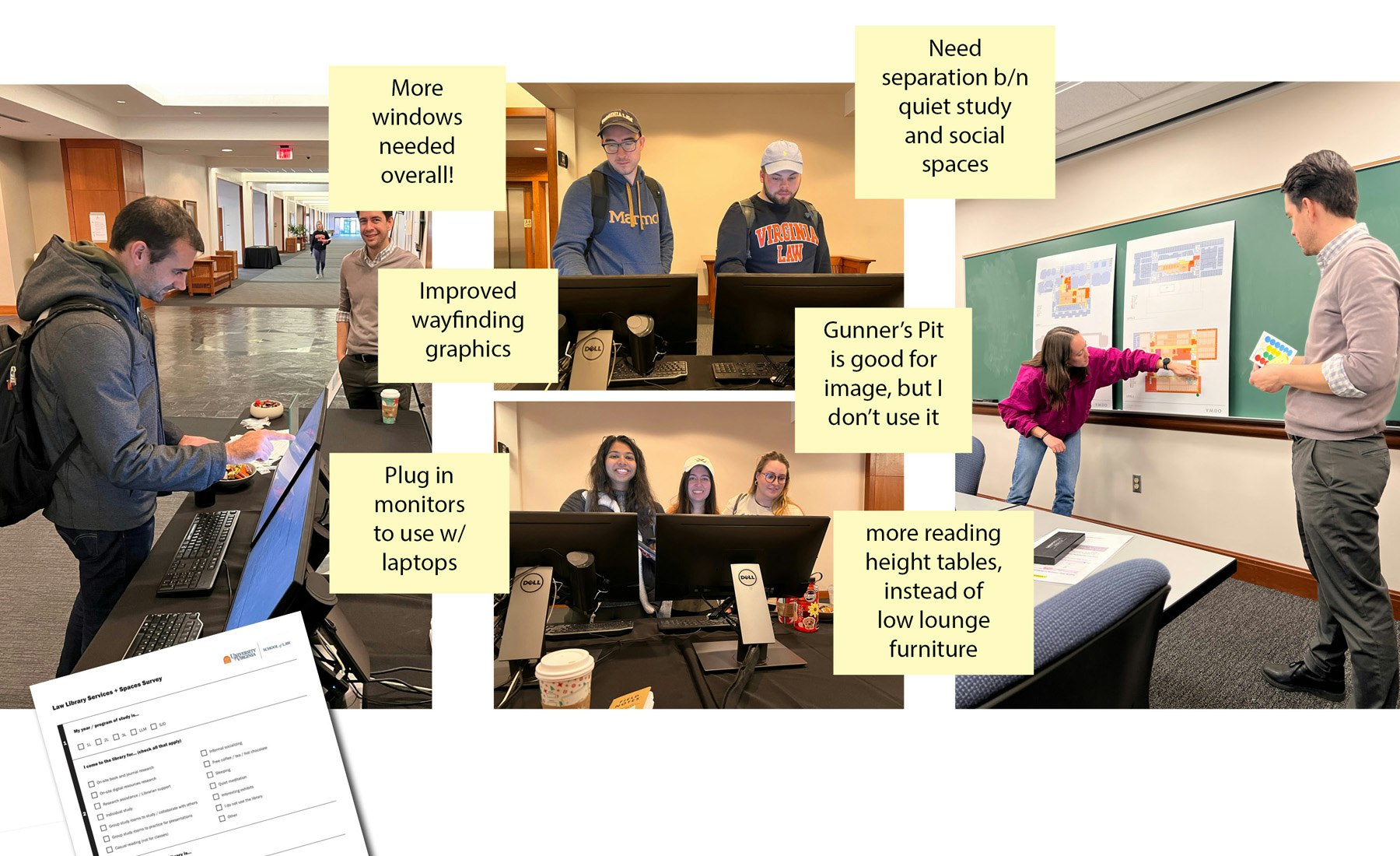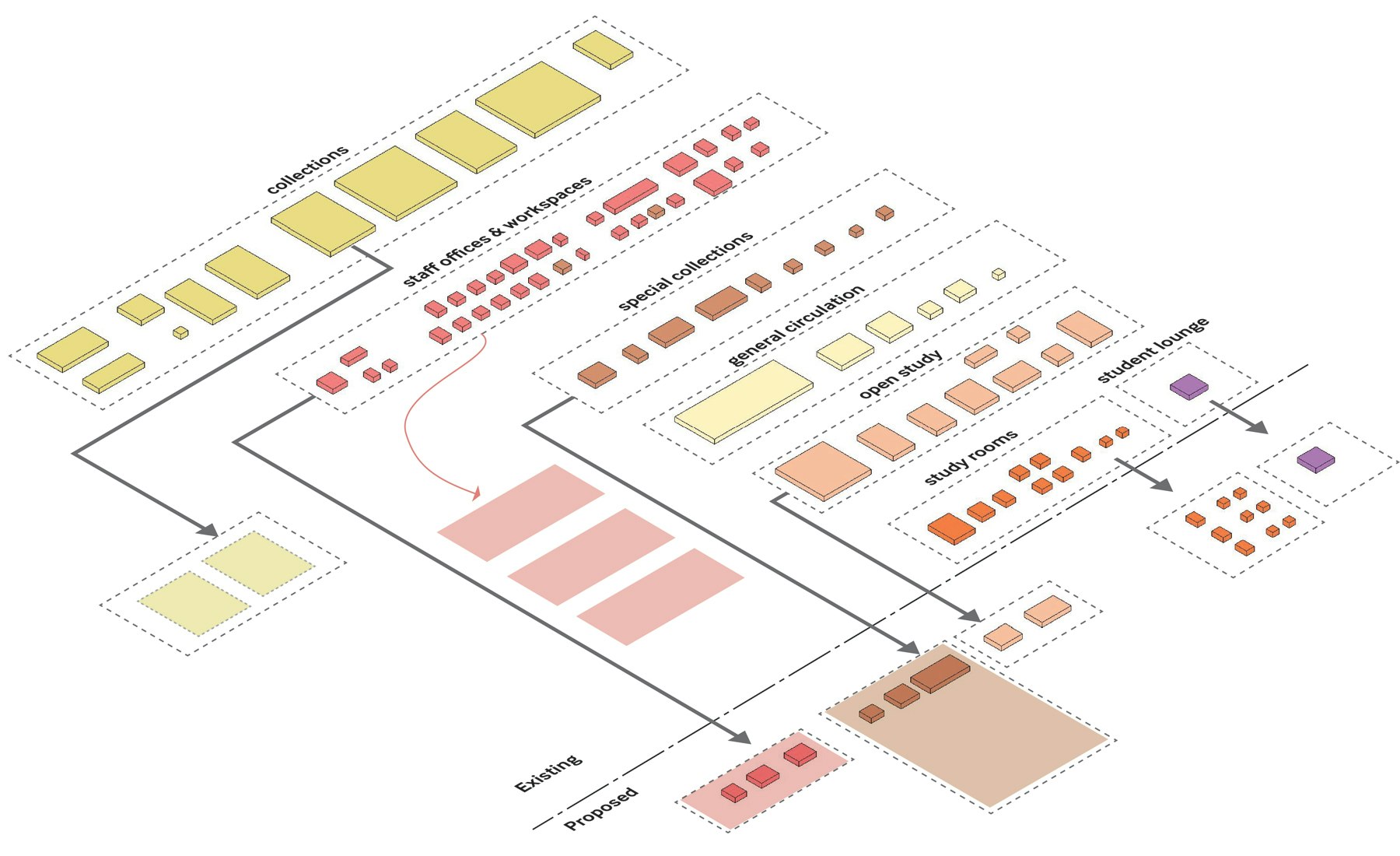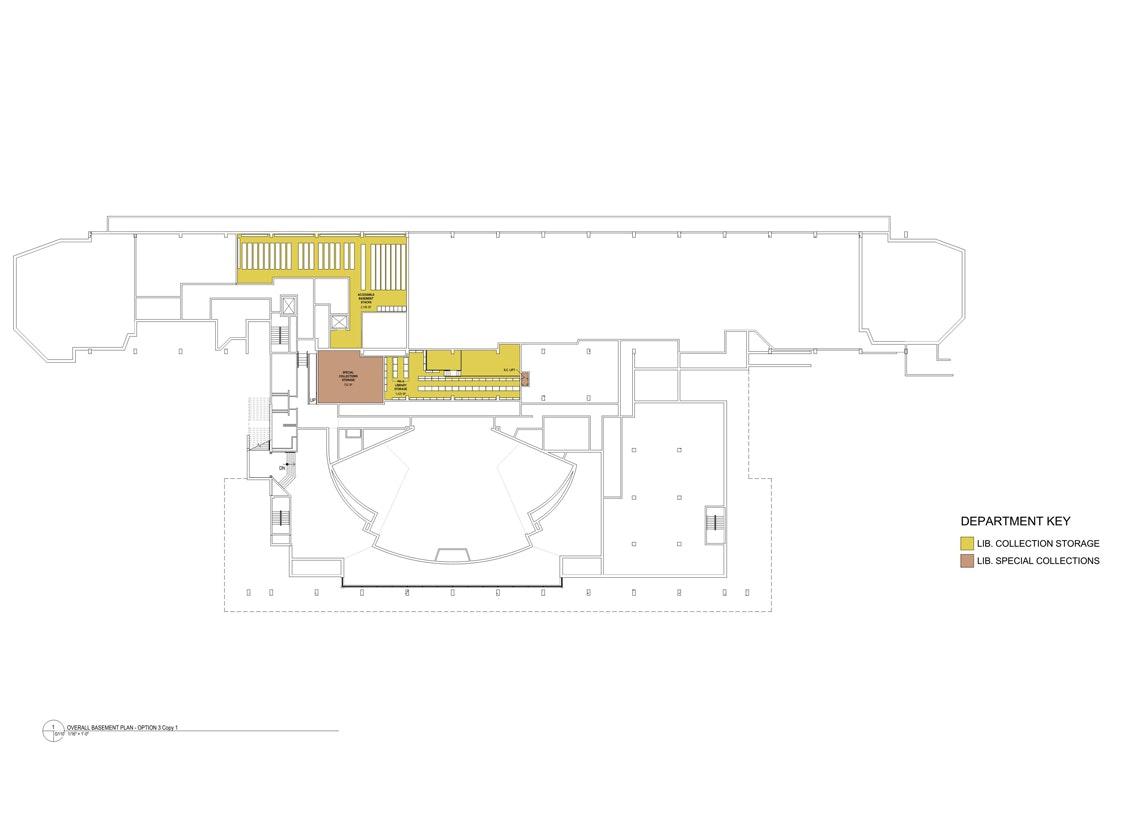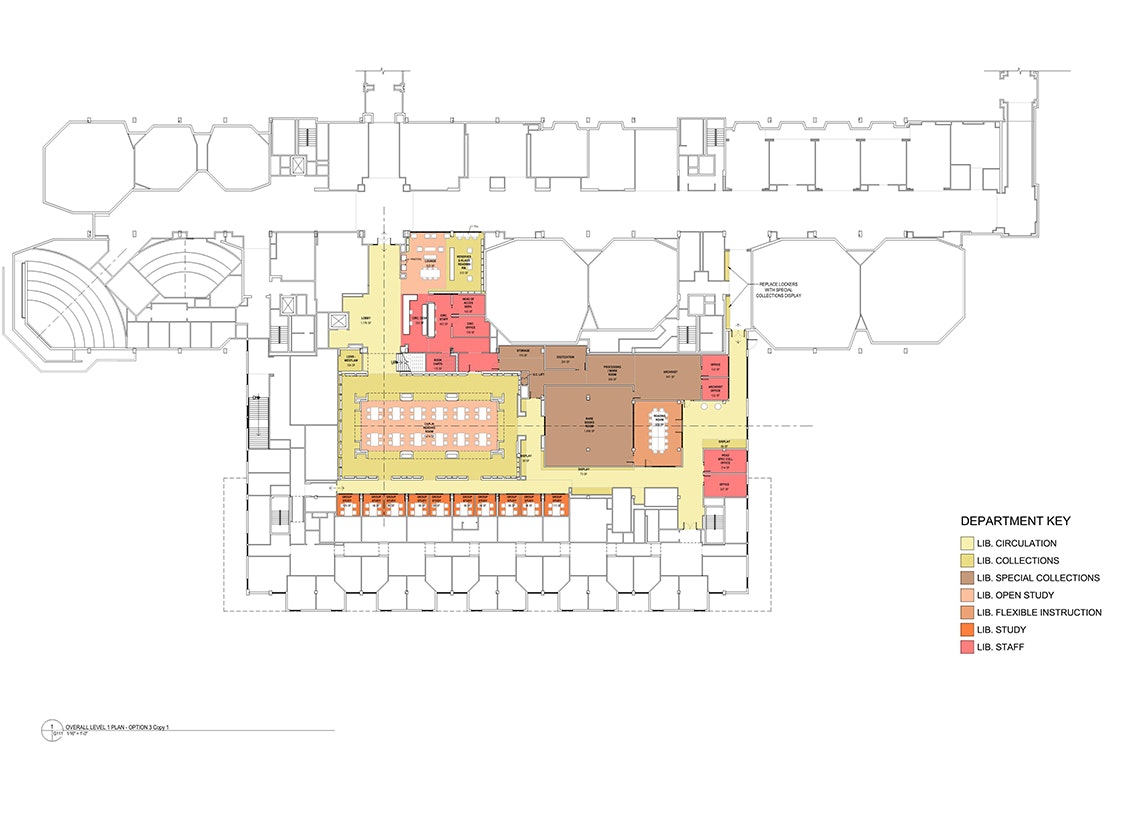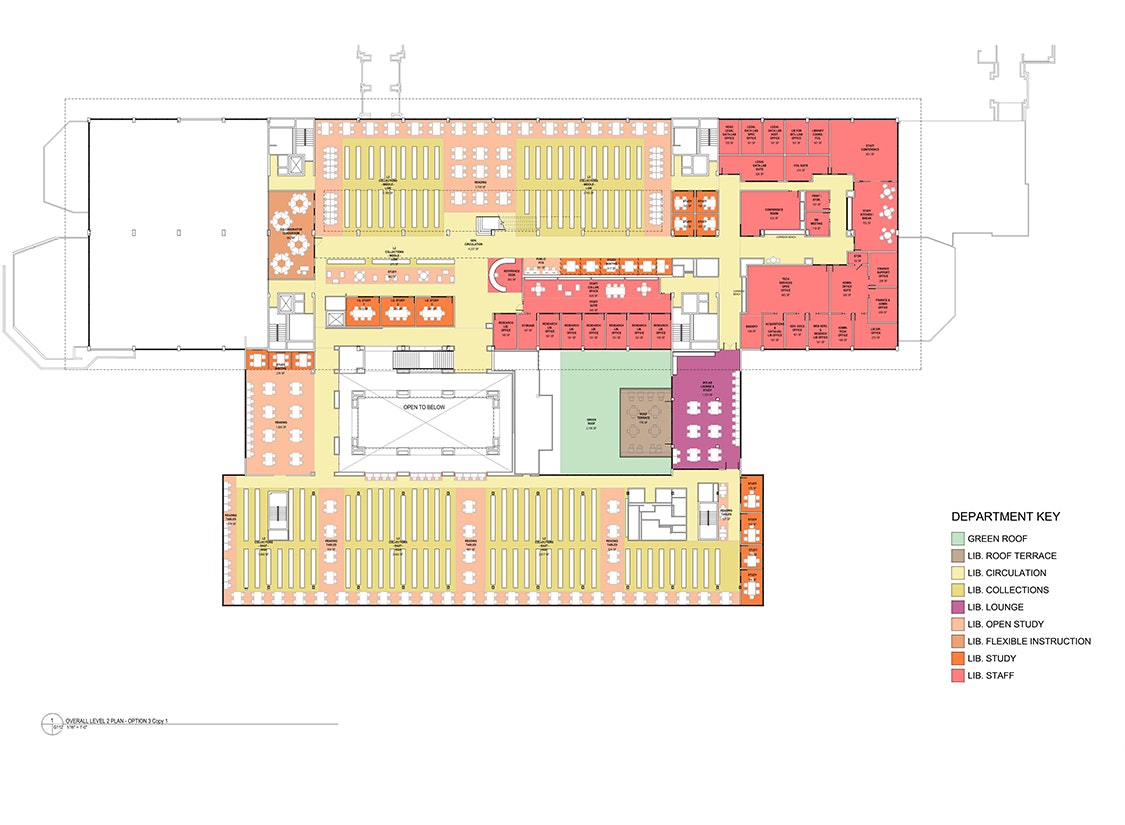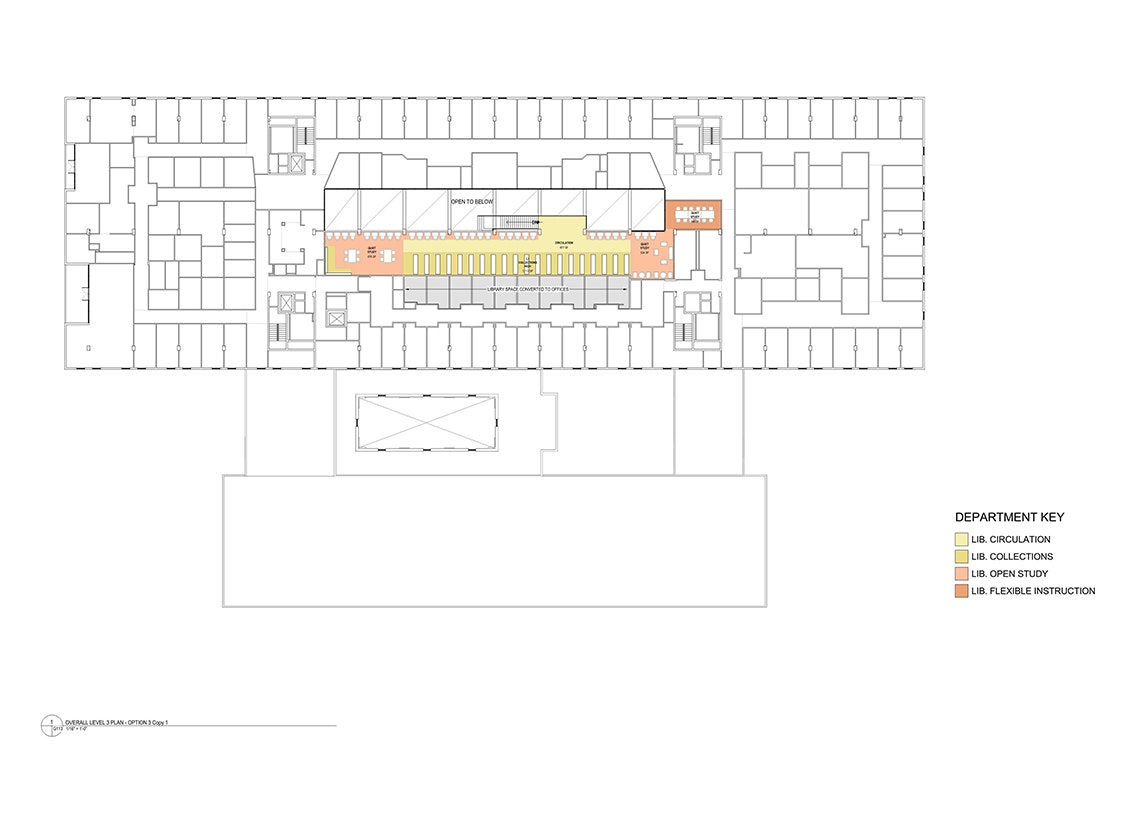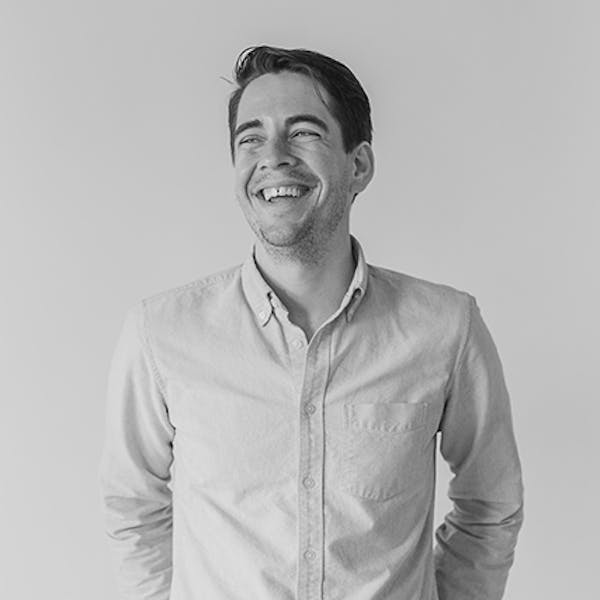Since moving to its current site in Brown Hall in 1974, the Arthur J. Morris Law Library at the University of Virginia Law School has undergone a series of renovations and expansions to keep pace with evolving student and faculty needs and expectations. Although necessary, thoughtful, and practical, this series of alterations has affected the navigability of collections, co-location of staff within library departments, and the configuration of individual and group study spaces. VMDO has worked with UVA to envision a more open, warm, flexible, and friendly library – one that not only supports academic excellence but also encourages engagement between faculty, staff, and students.
We began the visioning process by engaging with UVA students, librarians, and University representatives. Over the course of eight months, we used a range of engagement strategies, from individual staff interviews to weekly working group meetings to monthly committee sessions, to librarian forums, student outreach meetings and a storefront day in the halls of the Law School. Throughout this process, our team endeavored to listen first, listen closely, and to imbue our professional assessment with the everyday perspectives of the people that use the library. The study focused on three primary areas of interest.
- Student Experience: What do today’s law students need to excel in their chosen course of study?
- Library Effectiveness/Efficiency: What do the people working in the library need to deliver world-class services to faculty, students, and the public?
- Spatial Flexibility: How can work done today provide for present needs while being deployed in phases and/or creatively adjusted as future needs demand?
The design process began with assessing the existing conditions of the library, benchmarking the library’s physical assets against what other similar programs offer their students, and establishing the existing building program. After this initial information gathering phase, the working group began to analyze ways to rebalance the square footage between departments to achieve the goals established in the workshops, interviews, and forums. We developed multiple studies to consider viable alternative layouts, and then created a single, preferred design plan that synthesized the best aspects of the generative studies.
The plan proposes an enlarged, more welcoming entrance and cohesive “neighborhoods” for various study areas, staff areas, and collections. All the necessary services are provided in an efficient and easy-to-navigate new layout. To create more space for people, the plan proposes more efficient/dense collection storage, co-located staff, consolidated special collections, and re-distributed student study space and office space. In addition, it answers calls from students and library staff for maximizing natural light and views of nature. The proposed changes include connecting the interior of the library to the law school community and the natural setting beyond.
While the plan includes many innovations, VMDO was careful to preserve and enhance the things that make the library an iconic Law School space and a popular destination for students, alumni, and visitors. The report prioritizes physical space as a major contributor to academic success and social cohesion, but also acknowledges the role technology and virtual engagement plays in today’s world. It is our best attempt at merging the physical and virtual implications of legal education in the 21st century. We hope that the foundations laid in this report provide a robust platform from which UVA’s Law Library can continue to fulfill its mission of “excellence in teaching, research, and publication” well into the future.
Client: The University of Virginia Law School
Location: Charlottesville, VA
Discipline: Libraries
Completion: 2023
Size: Proposed 70,800 SF renovation
